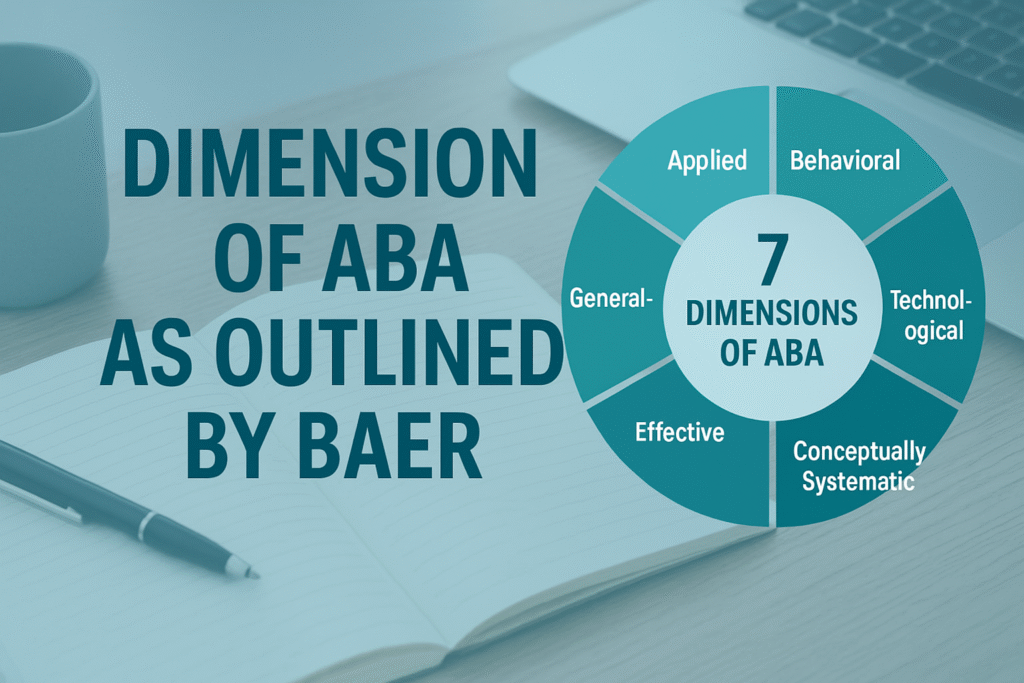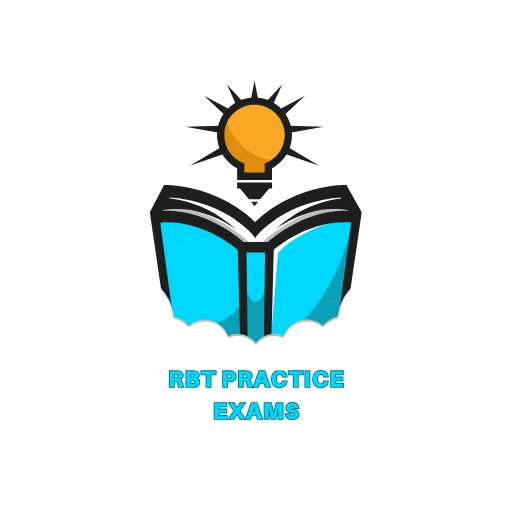If you are preparing for the RBT exam or learning about Applied Behavior Analysis (ABA), one phrase you will often hear is the dimension of ABA as outlined by Baer. Back in 1968, Baer, Wolf, and Risley published a groundbreaking article in the Journal of Applied Behavior Analysis. In it, they outlined seven dimensions that define what makes ABA effective, ethical, and evidence-based.
Table of Contents

These dimensions remain the backbone of ABA practice today. Whether you’re a Registered Behavior Technician (RBT) student or a parent curious about how ABA works, understanding these principles will give you a solid foundation.
Let’s break down each dimension in plain, human-friendly language with examples.
The Seven Dimensions of ABA as Outlined by Baer, Wolf, and Risley
1. Applied
ABA is called applied because it focuses on real-life, socially significant behaviors. This means the skills targeted are important to the individual’s daily life, such as communication, self-care, or reducing harmful behaviors.
Example: Instead of teaching a child to recite the alphabet backward, an ABA program might focus on requesting help when needed because that skill directly improves independence.
2. Behavioral
The behavioral dimension means ABA deals with observable and measurable actions, not assumptions or internal states. Behavior is defined in a way that anyone can see and track.
Example: Rather than saying “the child is upset,” ABA measures observable actions like crying, throwing objects, or refusing to move. This makes progress clear and trackable.
3. Analytic
ABA is analytic because it looks for clear evidence that the intervention is what caused the behavior change. Data drives every decision.
Example: If a token system is used to encourage hework completion, the analyst checks the data to see if homework rates improved specifically because of that system.
4. Technological
This dimension means ABA procedures are described in such detail that another practitioner can replicate them. In other words, ABA programs must be clear, structured, and teachable.
Example: Instead of saying “use praise,” a technological ABA plan would state: “After the child completes the task, provide verbal praise such as ‘Great job!’ immediately within 2 seconds.”
5. Conceptually Systematic
ABA interventions are not random tricks they are rooted in scientific behavioral principles like reinforcement, punishment, and stimulus control.
Example: Teaching a child to share isn’t just a suggestion from a teacher; it’s based on reinforcement strategies that increase the likelihood of sharing happening again.
6. Effective
The effective dimension requires that interventions produce meaningful improvements in behavior. It’s not enough to see a small change it must truly make a difference in the person’s life.
Example: If a child reduces tantrums from 10 times a day to once a week, that’s an effective result that improves quality of life for the child and family.
7. Generality
The final dimension, generality, means behavior changes last over time, across settings, and with different people. Skills shouldn’t just work in a therapy room they should carry over to home, school, and the community.
Example: If a child learns to greet their therapist, the goal is for them to also greet classmates, teachers, and family members naturally.
Why Are These Dimensions Important?
The seven dimensions outlined by Baer, Wolf, and Risley act like a quality checklist for ABA. If an intervention doesn’t meet these standards, it’s not truly ABA. For RBTs, knowing these dimensions is crucial for passing the exam and for providing ethical care
By sticking to these principles, ABA remains scientifically valid, person-centered, and effective.
FAQ: Dimensions of ABAWhat are the seven dimensions of ABA as outlined by Baer?
They are Applied, Behavioral, Analytic, Technological, Conceptually Systematic, Effective, and Generality.
Why did Baer, Wolf, and Risley create these dimensions?
In 1968, they wanted to define what made ABA distinct from other therapies. Their framework still guides ABA practice worldwide.
How do the dimensions relate to RBT exam prep?
The RBT exam tests knowledge of these principles because they are the foundation of ethical and effective ABA practice. Practicing with an rbt practice test helps reinforce this knowledge.
Do the dimensions still apply today?
Yes. More than 50 years later, the seven dimensions remain the gold standard, recognized by the Behavior Analyst Certification Board (BACB) and applied in modern therapy settings.
Practical Study Tips for RBT Students
- Use repetition: Review the seven dimensions daily until you can explain each one in your own words.
- Practice with examples: Apply each dimension to real-life scenarios.
- Test yourself: Try a rbt mock test to check your understanding before the real exam.
- Focus on application: Remember that exam questions often present scenarios—knowing the definitions isn’t enough; you must apply them.
Internal and External Learning Resources
For a deeper understanding of ABA, check out the official ABA Wikipedia page for general information.
To prepare for certification, visit the BACB website for official requirements.
If you’re ready to practice with real exam-style questions, start with:
Conclusion
The dimension of ABA as outlined by Baer continues to shape the way behavior analysis is taught, practiced, and tested. These seven principles Applied, Behavioral, Analytic, Technological, Conceptually Systematic, Effective, and Generality ensure ABA interventions remain ethical, measurable, and life-changing.
If you are preparing for your RBT exam, mastering these dimensions is non-negotiable. The best way to build confidence is through practice.
Start your rbt practice exam today and take the next step toward becoming a skilled RBT.
